Helpful Information for VKRP in Fall 2023

Whether you are new to the classroom or an experienced educator, a new school year is exciting for teachers and students! It is filled with endless possibilities and opportunities to support student’s academic and social-emotional growth.
VKRP began a statewide rollout in kindergarten during the 2019-2020 school year. Four-year-old pre-kindergarten classrooms in publicly funded programs began using the VKRP system during the 2021-2022 school year. The following year, 2022-2023, publicly funded pre-kindergarten three-year-old classrooms were added. Since its inception, there has been great success with the utilization of VKRP assessments, reports, and resources. However, many educators still have some lingering questions about VKRP. This blog intends to answer some of these questions and provide useful information for pre-kindergarten and kindergarten teachers, administrators, and program directors during this fall 2023 term.
Which Students are Required to be Assessed?
Kindergarten
All kindergarten students are required to participate in the fall of 2023 and in the spring of 2024 (HB30, Chapter 2, 129.H).
For 2023-2024, the following publicly funded three-year-old and four-year-old children are required to participate in VKRP in fall 2023 and spring 2024:
- VPI classrooms: This includes children who are enrolled in a VPI classroom, but who may not be funded through VPI state dollars (e.g., an ECSE student or a locally funded student in a classroom that is supported by VPI). This includes VPI students in a community-provider setting.
- VECF Mixed Delivery Classrooms.
Pre-k classrooms in public schools that are not funded by VPI, such as a full ECSE classroom, Head Start classroom, Title I classroom, or other locally supported pre-k classroom, may choose to use VKRP assessments with their children, but they are not required at this time.

How can I prepare to utilize VKRP Assessments, Reports, and Resources?
The VKRP web portal contains numerous resources to help teachers make the most of all VKRP has to offer. These supports include online training modules, manuals, demonstration videos, and practice assessments. Additionally, both the VKRP web portal and website contain vetted resources to assist in building mathematics, self-regulation, and social skills for young students.
The VKRP August blog outlined these specific resources in order to prepare users for the fall 2023 assessment term. Visit that blog here. The Virginia Literacy Partnerships (VLP) also shared information about preparing for the PALS-K and the VALLS: Pre-K in their recent blog.
What is the Early Mathematics Assessment System (EMAS)?
From birth, there is evidence that young children hold informal, everyday mathematical ideas that make sense of the relationships that they observe. The EMAS was created by Herb Ginsburg and colleagues at Columbia University and intentionally constructed to measure a wide range of young children’s early mathematics skills from three to six-years-old. VKRP team members worked with Dr. Ginsburg and partnered with early childhood mathematics experts, including Virginia teachers and mathematics specialists, to revise and expand the EMAS to its current forms.

What are some best practices for administering the EMAS with students?
- Organize materials: After completing practice assessments on the VKRP web portal, teachers will have a better understanding of how to work with the materials in the VKRP assessment kit. The VKRP team encourages teachers to adjust their materials to best suit their needs. For example, some teachers have found it helpful to keep the shapes in a cup for easy access.
- Have a designated assessment space: It is ideal to find a quiet place to conduct the assessments; however, at times, classroom space is at a premium. Examine the classroom and think about whether there are places where distractions are less likely. It is recommended to collaborate with colleagues, program directors, principals to determine alternate and available assessment locations during the assessment window.
- Take breaks when needed: The EMAS is programmed to auto-save responses, allowing for breaks when needed. If a break is needed, teachers can stop the assessment by clicking the “dashboard” button on the menu bar and resume at a later time and/or day.
What is the Child Behavior Rating Scale (CBRS)?
The Child Behavior Rating Scale (CBRS) is a teacher report measure of two areas of students’ social-emotional skills:
- Self-regulation skills: those that support students in managing their attention, emotions, and behaviors to adapt to the demands of the school/program environment (e.g., listen to others, follow expectations and multi-step directions, and stay focused on tasks).
- Social skills: those that assist students in successfully navigating interactions and building relationships with peers and adults (e.g., cooperate in a group, express thoughts, and emotions, and resolve conflicts in a positive way).
VKRP uses the CBRS to measure self-regulation and social skills because it has been proven to be reliable and valid across culturally diverse contexts.
What are some best practices for completing the CBRS?
To help best utilize the CBRS assessment tool, we recommend the following:
- Take time to observe: The CBRS should be completed after four to six weeks of instruction to allow adequate time for teachers to observe students’ skills.
- Observe students’ behaviors across settings: Noting student behavior across settings allows a teacher to obtain a more complete picture of their skills in these areas.
- Take notes of student behaviors: Although this is not required, keeping notes about specific behaviors are most helpful. Noting particular behaviors allows teachers to move away from interpretation and evaluation.
- Seek out and incorporate information from other sources: Confer with other teachers or staff who regularly interact with or observe a student to capture their abilities across contexts. It can be helpful to incorporate the behaviors and skills they notice into student ratings. Getting the perspective of other staff members who work directly with a student (e.g., educational specialists, teacher assistants, counselors, etc.) provides a more complete picture of a student’s skills in different contexts.
- Reflect on your own biases: Reflecting on the strength and quality of their relationship with students when rating student behaviors might alert teachers to potential biases in their ratings. If they feel disconnected from particular students, they can examine the reasons for these feelings, and reflect on whether they are making assumptions and attributions about particular behaviors based on a student’s cultural background, race/ethnicity, gender, age, socioeconomic status, or other characteristics.
Teachers support many aspects of student’s development, which encompass physical, social-emotional, and cognitive development. Use the VKRP data in conjunction with other formative and summative assessments to plan instruction at the group and individual student levels. Having this information on students’ academic and social-emotional skills will help educators better support students’ development of important foundational skills for success in school and in life.
More Questions for the VKRP Team? VKRP provides support via the online chat feature when you are in the system, via email vkrp@virginia.edu, and via toll free 866-301-8278

